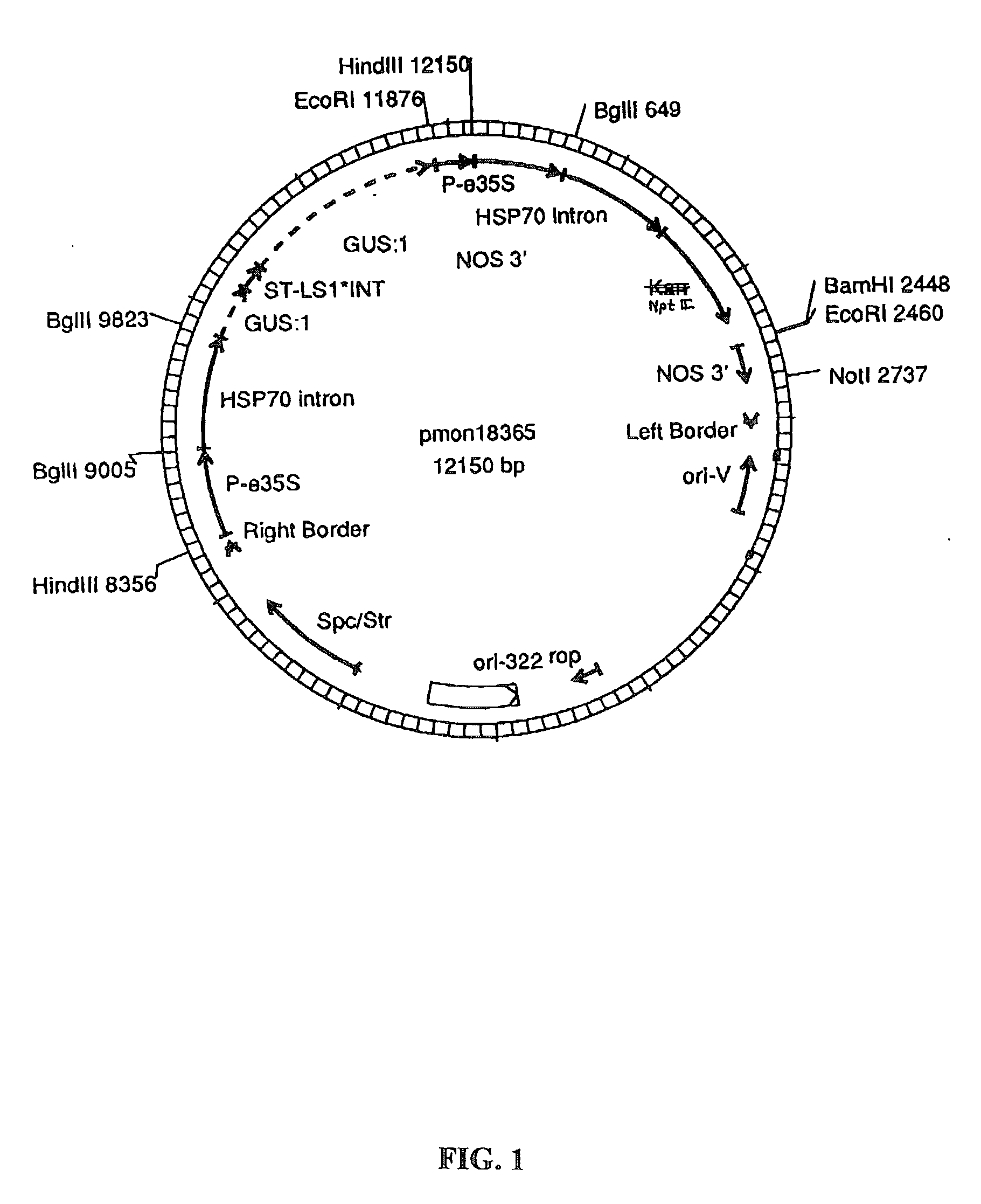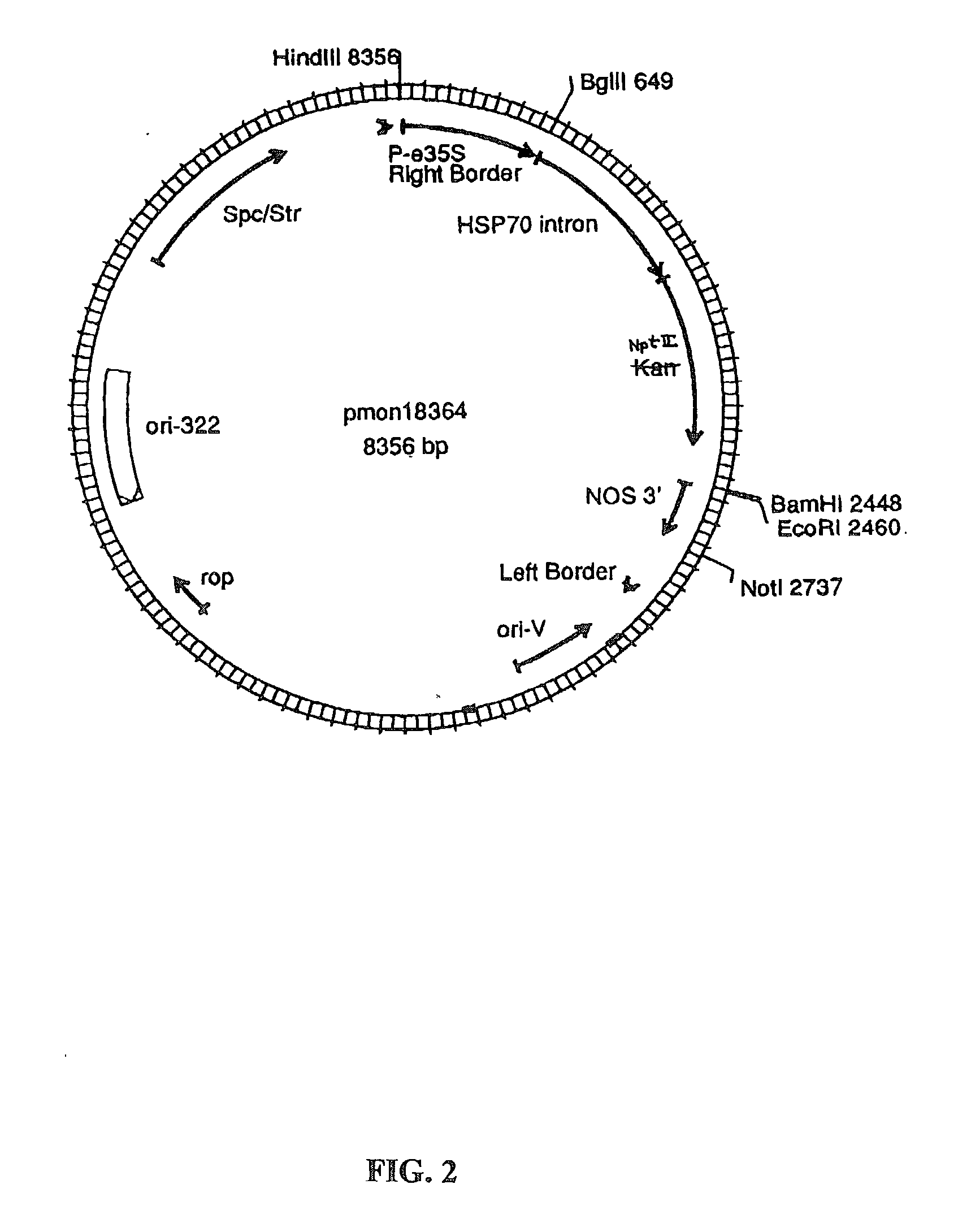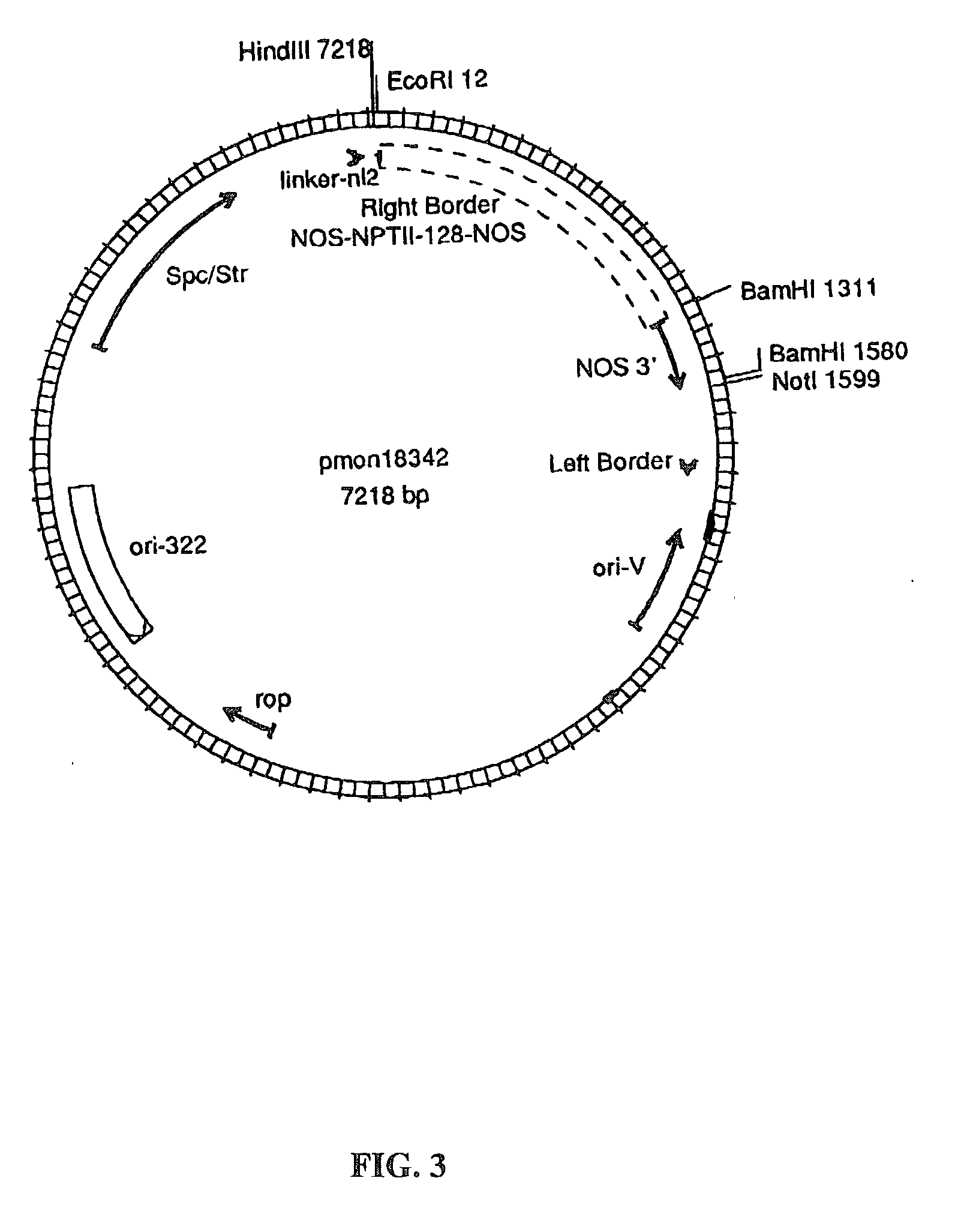Methods for the production of stably-transformed, fertile wheat employing agrobacterium-mediated transformation and compositions derived therefrom
a technology of agrobacterium and agrobacterium, applied in the field of molecular biology, can solve the problems of inability to efficiently transform methods using foreign dna, inability to reproduce or predict other methods of transformation, and inability to effectively introduce foreign dna, and achieve the effect of high maize transformation
- Summary
- Abstract
- Description
- Claims
- Application Information
AI Technical Summary
Benefits of technology
Problems solved by technology
Method used
Image
Examples
example 1
5.1 Example 1
Transformation Using Immature Embryos
[0111] 5.1.1 Explant Preparation
[0112] A spring wheat Triticum aestivum cv. Bobwhite was used throughout this study. Stock plants were grown in an environmentally controlled growth chamber with 16-h photoperiod at 800 .mu.mol m.sup.2s.sup.-1 provided by high-intensity discharge (HID) Sylvania lights (GTE Products Corp., Manchester, N.H.). The day / night temperatures were 18 / 16.degree. C. Immature caryopses were collected from the plants 14-d after anthesis. Immature embryos (IEs) were dissected aseptically and cultured on one of the following pre-culture media before inoculation: 1) semisolid callus induction medium CM4 or CM4C (TABLE 5) for 1-6 d; 2) liquid CM4C supplemented with 0.25 M raffinose and mannitol, respectively, for 1 d; 3) liquid CM4 medium with {fraction (1 / 10)} strength of the MS salts and supplemented with 10 g / l glucose, 3.9 g / l MES for 1 to 3 h. All the cultures were conducted at the temperature of 23-25.degree. C.
5...
example 3
5.3 Example 3
Transformation of Suspension Cells
[0146] 5.3.1 Explant Preparation
[0147] Wheat v. Mustang suspension cells were cultured in liquid MS1WSM (TABLE 9) at 28.degree. C. in the dark on a rotary shaker (250 rpm). Cells harvested after 3 d subculture were used for inoculation with Agrobacterium. The general protocol for transformation of suspension cells is given in FIG. 7.
[0148] 5.3.2 Agrobacterium Culture and T-DNA Delivery The Agrobacterium culture method was essentially the same as described in Example 1. The Agrobacterium cell density was adjusted to OD.sub.660 0.5-1 in inoculation medium (CM4 medium with {fraction (1 / 10)} strength of the MS salts and 3.9 g / l MES and supplemented with 10 g / l glucose and 200 .mu.M acetosyringone. Liquid medium was removed from the wheat suspension culture by vacuum. Each ml of the wheat cells was mixed with 3 ml of the Agrobacterium cell suspension petri dishes (100.times.25 mm). The inoculation was performed at 23-25.degree. C. for 30 min...
example 4
5.4 Example 4
Transformation of Suspension Cells
[0157] 5.4.1 Agrobacterium Constructs
[0158] Plant transformation vectors similar to those derived from a Ti plasmid of Agrobacterium tumefaciens, such as those disclosed by Herrera-Estrella et al. (1983), Bevan et al. (1983), Klee et al. (1985) and EPO publication 120,516 (Schilperoort et al.) were constructed for use in wheat. The Agrobacterium binary vector for wheat, pMON18364 (FIG. 2), was constructed by the removal of the P-nos / nptII / nos 3' from pMON18342 (FIG. 3), by digesting pMON18342 with NotI and HindIII restriction enzymes to completion and isolation of the 5.7 kb fragment. This resulting 5.7 kb vector backbone fragment contains the ori-322 replication origin for replication in E. coli and the ori-V region for replication in Agrobacterium, bacterial resistance markers for spectinomycin and streptomycin selection. The P-e35S / hsp70 intron / kan / nos 3' chimeric fragment was isolated from pMON19476 (FIG. 4) by digesting to completi...
PUM
| Property | Measurement | Unit |
|---|---|---|
| Time | aaaaa | aaaaa |
| Volume | aaaaa | aaaaa |
| Volume | aaaaa | aaaaa |
Abstract
Description
Claims
Application Information
 Login to View More
Login to View More - R&D
- Intellectual Property
- Life Sciences
- Materials
- Tech Scout
- Unparalleled Data Quality
- Higher Quality Content
- 60% Fewer Hallucinations
Browse by: Latest US Patents, China's latest patents, Technical Efficacy Thesaurus, Application Domain, Technology Topic, Popular Technical Reports.
© 2025 PatSnap. All rights reserved.Legal|Privacy policy|Modern Slavery Act Transparency Statement|Sitemap|About US| Contact US: help@patsnap.com



